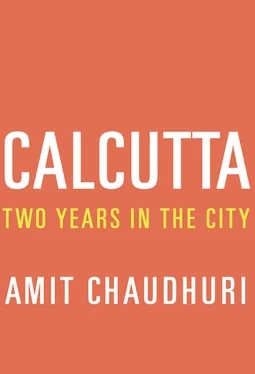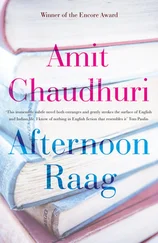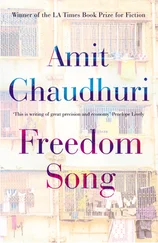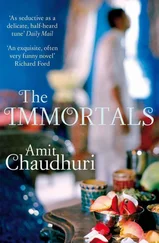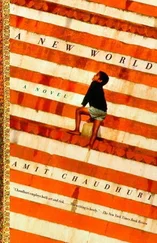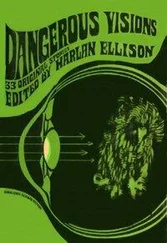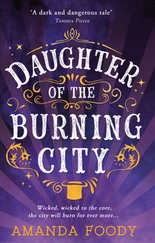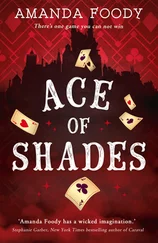Grudging asides about Meros aren’t entirely taboo among Bengalis even today; although, increasingly, they make you nervous. However, in the changed scenario of the present, in the new “cultural landscape,” it’s safe to assume that Bengali jokes outnumber the Marwari ones. Yet even — perhaps particularly — genteel, educated Bengalis continue to sometimes make disparaging remarks about Marwaris. Paradoxically, there’s been no backlash against minorities in Calcutta since the violence of Partition; the long reign of the Left Front government has, probably, made Calcutta at once the most untenable and the least xenophobic of the major Indian cities — of, possibly, the major cities of the world.
* * *
A few years ago, around 2007–08, newspapers in Calcutta announced that Bengali was now spoken by only 37 per cent of the city’s inhabitants. People were shocked — or at least taken aback — by the figure. Here, clearly, was proof that Calcutta was no longer a Bengali city. Besides, if ever a city — rather than a nation or state or province — had been synonymous with a language, it was Calcutta. Part of the reason for this was the significant decisions taken in the 1860s by writers — by the wayward (but great) poet Michael Madhusudan Dutt and the novelist Bankimchandra Chatterjee — to abandon English early in their careers and turn to Bengali. To speak and write in Bengali from the late nineteenth century onward didn’t, where the bhadralok was concerned, exclude a knowledge of English; it implied it, irrefutably. Speaking Bengali in Calcutta seventy years ago was unlike speaking English in London at the time; that is, it was the tip of a multilingual iceberg, with Hindi, Urdu, and English almost as readily available as Bengali and its Eastern dialects, and the backdrop comprising Gujarati, Tamil, Telugu, Punjabi, Armenian, Mandarin, Cantonese, Italian, Tibetan, Bhojpuri, Maithili, Oriya, Marwari, Assamese. Of course, visitors who’ve spent a few months in Calcutta will begin to speak some Bengali, because in many ways it’s a language of the street and the offices and also of nooks, crannies, and recesses, of tea-tables covered with plastic, of friendships and confidences; and visitors, one imagines, gradually begin to make local friends, have conversations with neighbours, and exchange confidences. And yet, probably because it emerged from and was situated in a multilingual world, there has been no successful chauvinistic movement connected to the language. There was once a political party that called itself Amra Bangali (We Are Bengalis). They could’ve been something out of Parasuram: for his fictions can be at once dystopian and comical. The Amra Bangali gang went about in the early eighties blackening English-language signboards. Then, before they could mature from being a nuisance into a threat, they vanished.
Their job was actually accomplished in a more organised and far-reaching way by, paradoxically, the Left Front government. In 1983, under the CPI(M), English ceased to be taught at the primary level in Bengali-medium schools, for being an impediment to the progress of the less privileged who lived in a milieu that had little English. This ideological move, thirty years later, was seen to have been misled and not have benefited the disadvantaged classes and areas it was supposed to. It was reversed only in 2009. By then, the city had changed. It had entirely lost its aura of leadership (“What Bengal does today, India does tomorrow”: thus the famous but obsolete formula from the nationalist Gokhale, once frequently quoted by Bengalis, and today only invoked with bitterness). The ingenuous Rajiv Gandhi, visiting Calcutta in 1985 as prime minister, had inadvertently informed its inhabitants that it was a “dying city.” Out of the remnants of that city, and through a simple act of renaming, eventually arose a new one — without pedigree or history; large but provincial; inhabited but largely unknown — called “Kolkata.”
* * *
The Bengali language was at the centre of a moment of sudden self-consciousness in Calcutta in the nineteenth century, the stirring and arms-stretching of individualism, the “I” waking up from dormancy and sleep and speaking its name. What dreams this “I” had had in the meanwhile we can only guess at. The “I” also became the “eye,” open and looking at the world: and so, in Satyajit Ray’s film Pather Panchali , we’re first introduced to Apu, the boy, as an open eye. He’s pretending to sleep; his sister Durga shakes him; the eye opens; light floods in. That light is consciousness. It illumined, in nineteenth-century Calcutta, literature; the academic disciplines; the professions; science. And the great names of that era contained radiance and illumination: Rabindranath—“lord of the sun”; his older brother, the idiosyncratic, gifted, elegant Jyotirindranath—“lord of light.” My own name, Amit, which means “endless,” has appended to it (by my father) a middle name I never use: “Prakash”—“light.” “Endless light.” Last month, as I write this, I met another Amit, much older than me, who too has a middle name, “Jyoti,” meaning exactly the same thing. “Amitava” is another name recruited for this purpose, a conjunction of two words, “amit” and “abha,” or radiance. The names of ordinary-looking middle-class men in Bengal were, for four or five generations, replete with illumination.
When I’d visit Calcutta from England in the late eighties and early nineties, soon after my parents moved there, I’d sense there was something amiss. Even from above, from the aeroplane window, it looked poorly lit at night, with large patches of dark, compared to the bright, intricate city I used to view from the sky as a child. If the plane was landing in the daytime, you noticed that the verdant fabric that surrounds the city, with epic watery inlets — West Bengal is very fertile — was now bereft of the poetry that used to excite me as a boy when I gazed downward. Even the low houses that came closer as the plane descended — entirely unremarkable, entirely mysterious — which once seemed to me as if there was everything going on inside them, now looked part of a location in which nothing happens.
What had changed? I think it’s to do with the decline and marginalisation of the Bengali language — through the disappearance of the bhadralok class; through the processes of globalisation — a language which, in its books, its poems, songs, stories, cinema, brought the city into being in the imagination. Calcutta is an imaginary city; it’s in that realm that it’s most visible and detailed and compelling. I remember the covers of my cousins’ Puja annuals and of their collections of mystery stories, and the envy and inarticulate loss I’d feel upon studying them. But today? I turn to a snatch of conversation from the Scottish writer Alasdair Gray’s novel Lanark . “Glasgow is a magnificent city. Why do we hardly notice that?” asks a colleague at art school of the protagonist Duncan; who replies: “Because nobody imagines living here … if a city hasn’t been used by an artist not even the inhabitants live there imaginatively.”
And this is largely true of this new, hazy, provincial metropolis, Kolkata, which came into being in 2001—and explains why we know so little about it.
* * *
This city — Kolkata — is neither a shadow of Calcutta, nor a reinvention of it, nor even the same city. Nor does it bear anything more than an outward resemblance to its namesake, Kolkata: the city as it’s always been referred to in Bengali. I myself can’t stand calling it any other name but “Calcutta” when speaking in English; just as I’ll always call it “Kolkata” in Bengali conversation. Is this because we — cities and human beings — have contradictory lives that flow in and out of each other? To take away one or the other name is to deprive the city of a dimension that’s coterminous with it, that grew and rose and fell with it, whose meaning, deep in your heart, you know exactly.
Читать дальше
